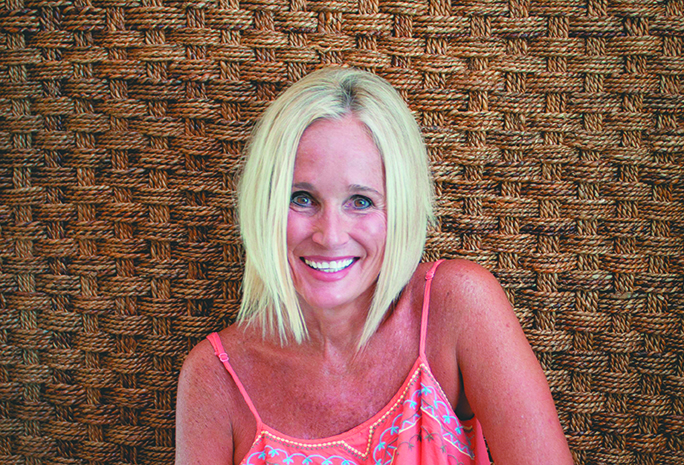The Warrior Within.
By Sharla Gorder

Humble Warrior is not the easiest pose in yoga. Nor is it anyone’s favorite. We tend to like Exalted Warrior a lot more. It’s more fun and flamboyant. I cue Exalted Warrior in almost every class I teach, right after Warrior II. It feels good to reach up and arch back, opening our hearts to the sky. It feels victorious.
Conversely, Humble Warrior is a deep bow toward the ground with hands clasped awkwardly behind us. It is a posture of humility.
It’s not surprising that we tend to enjoy reaching up more than bowing down. Society, especially in this age of social media influence, rewards us with “likes” and nods of approval for touting our victories, advertising our successes and celebrating our awesome awesomeness ad nauseam.
We’re really good at Exalted Warrior.
We suck at Humble Warrior.
And yet both are essential to the practice of yoga and of life.
I recently reread a fascinating book by columnist/author David Brooks, entitled “The Road to Character.” He portrays the struggling warriors within us as Adam I and Adam II, implying that the confrontation is as old as humanity itself.
According to Brooks, Adam I is the career-oriented, ambitious side of our nature. His virtues and talents look great on a résumé. Adam I achieves worldly success — often in competition with others — by winning victories (or amassing “likes”).
Adam II represents the deeper “eulogy virtues.” These are qualities like kindness, courage and faithfulness — the characteristics that might be talked about at our funeral. According to Brooks, “Adam II is the internal Adam. Adam II wants to embody certain moral qualities. Adam II wants to have a serene inner character, a quiet but solid sense of right and wrong, not only to do good, but to be good.” Adam II achieves “success” not by besting others, but by besting himself, by winning victories over his intrinsic weaknesses.
Adam II is a humble warrior. In order to wage war against one’s baser instincts, one must be aware that they exist. You can’t fight an enemy you don’t acknowledge. This requires humility, a bowing down that is often uncomfortable. It involves admitting that you are a messy mortal. We all are.
“We are all stumblers,” Brooks says, “and the beauty and meaning of life are in the stumbling — in recognizing the stumbling and trying to become more graceful as the years go by.”
Adam II’s work is never done. While Adam I may be able to rest on his laurels for a while once that dream job or millionth “like” is attained, Adam II strives to continually grow and mature, “not by being better than other people at something,” but by being better than he used to be.
Brooks argues, and I agree, that in today’s society, the scales are woefully imbalanced. We are urged to hone our résumé virtues often to the exclusion of our eulogy virtues. We are encouraged to boldly advertise our strengths and hide or deny our weaknesses.
Social media makes it seem like everyone is “exalted” and living their best lives, while we seem to just be stumbling along. We are shy about sharing our struggles. The modest voice of Adam II is drowned out in the ticker-tape parade of Adam I.
I want to change that — if only in my small circle of family and friends. I get together every month with women that I cherish — one at a time. As we sit together over a meal, I’ve been asking them two questions: What is bringing you joy or contentment these days? And, what is challenging you right now?
In the privacy and intimacy of these quiet get-togethers, the answers to both questions almost always come from the heart of Adam II. I share my current joys and struggles as well, and together we help each other stumble along.
We are warriors, both exalted and humble. We are exalted — lifted up by one another in friendship. We are humble — bowing down before one another in reciprocal empathy.
We are in this together — beautiful, messy mortals.







